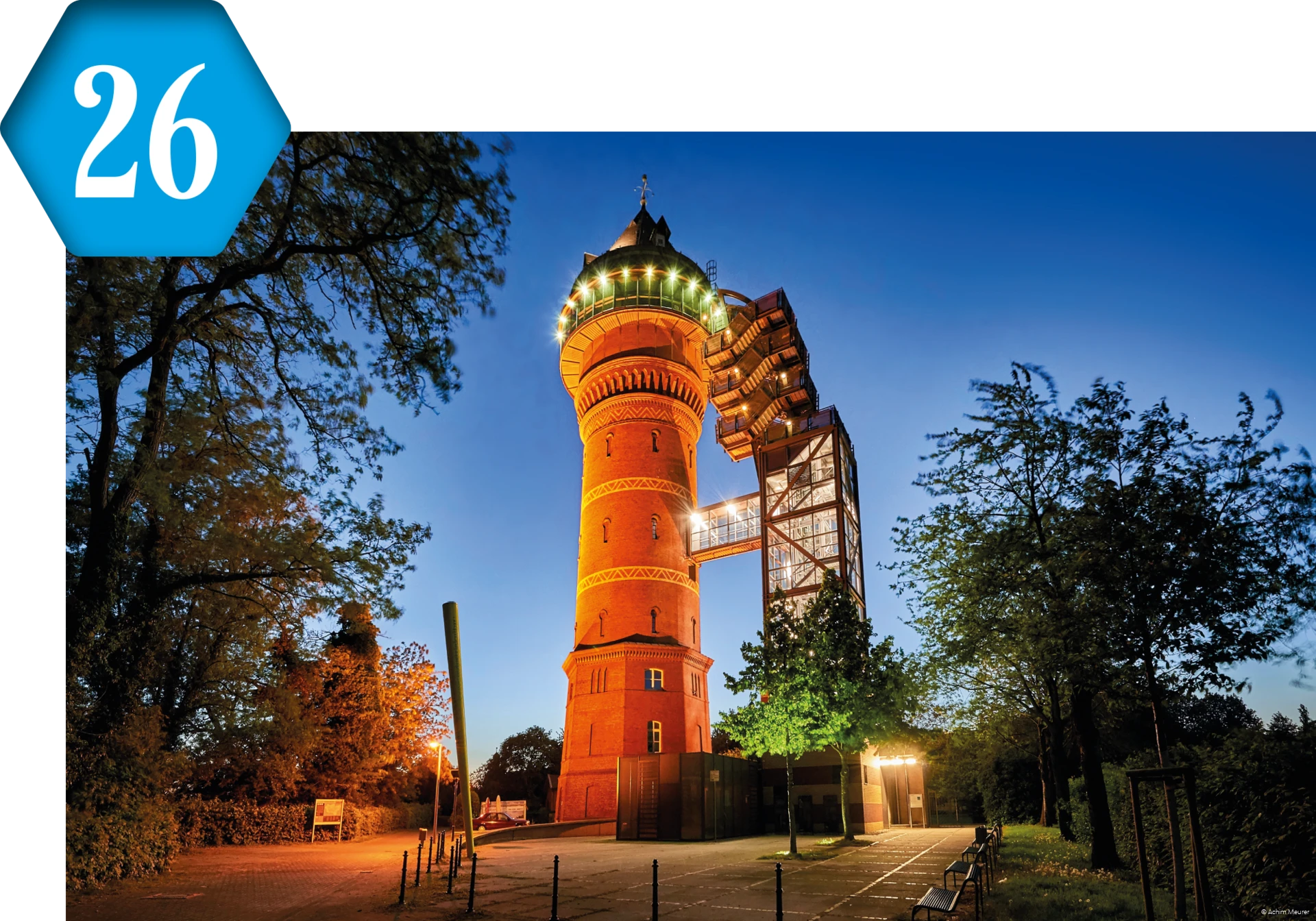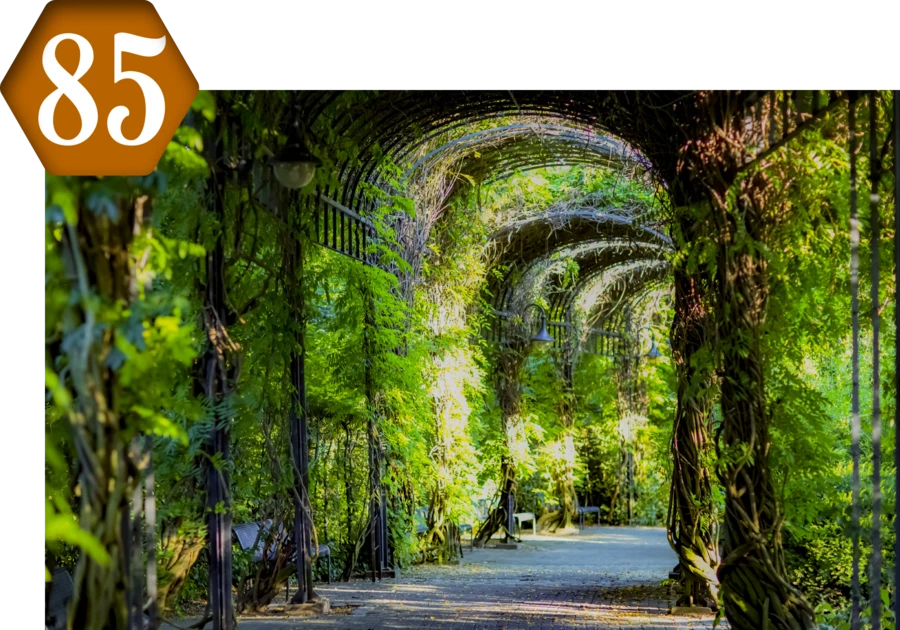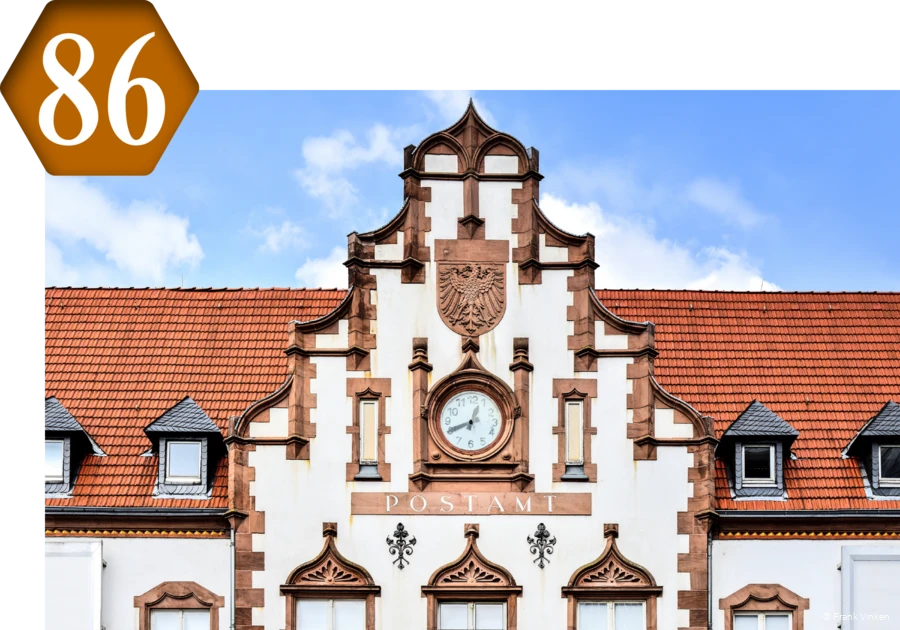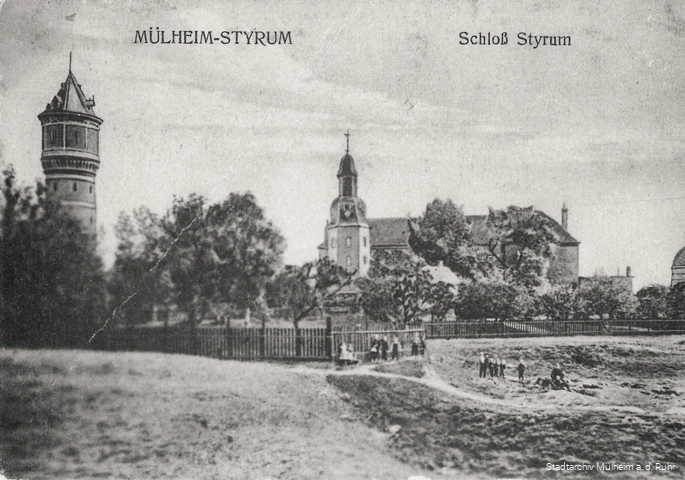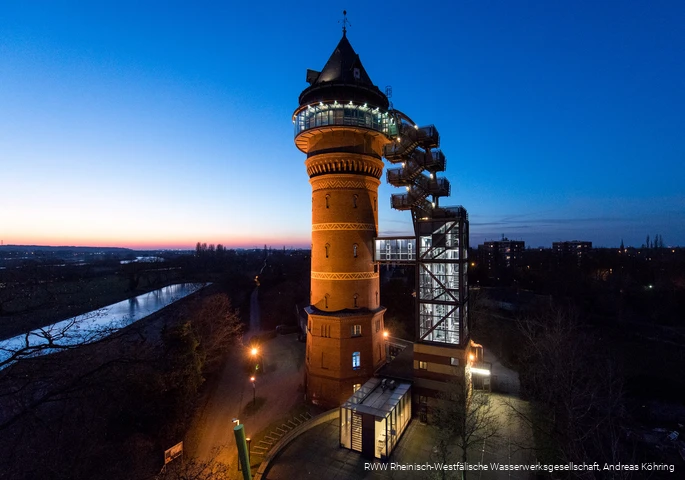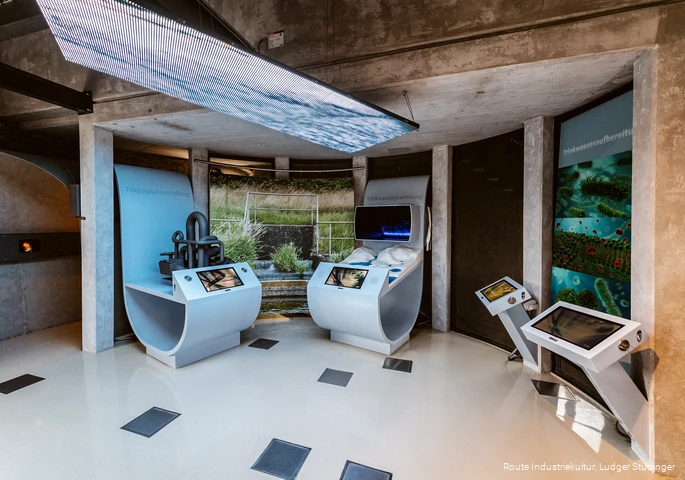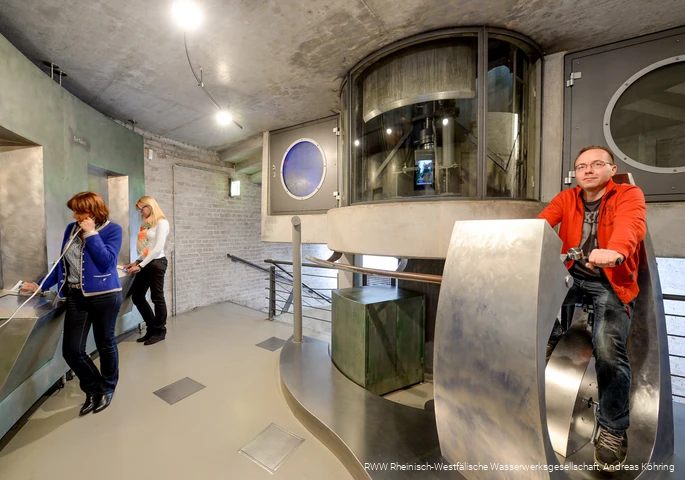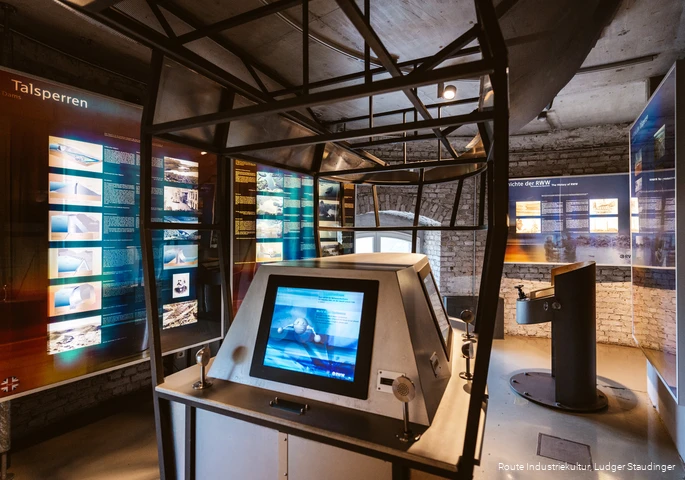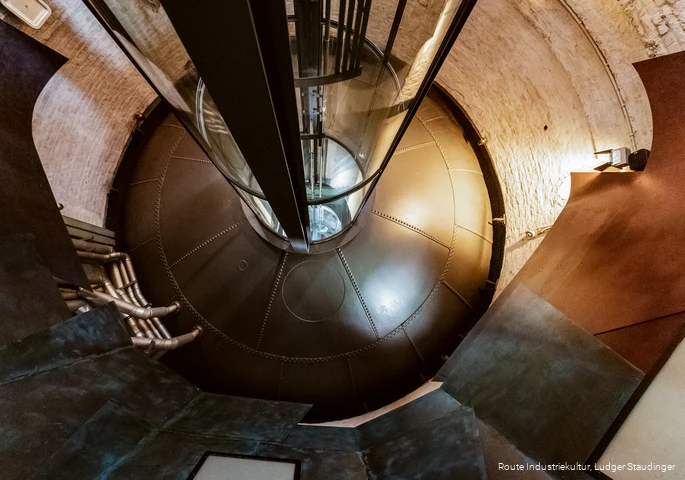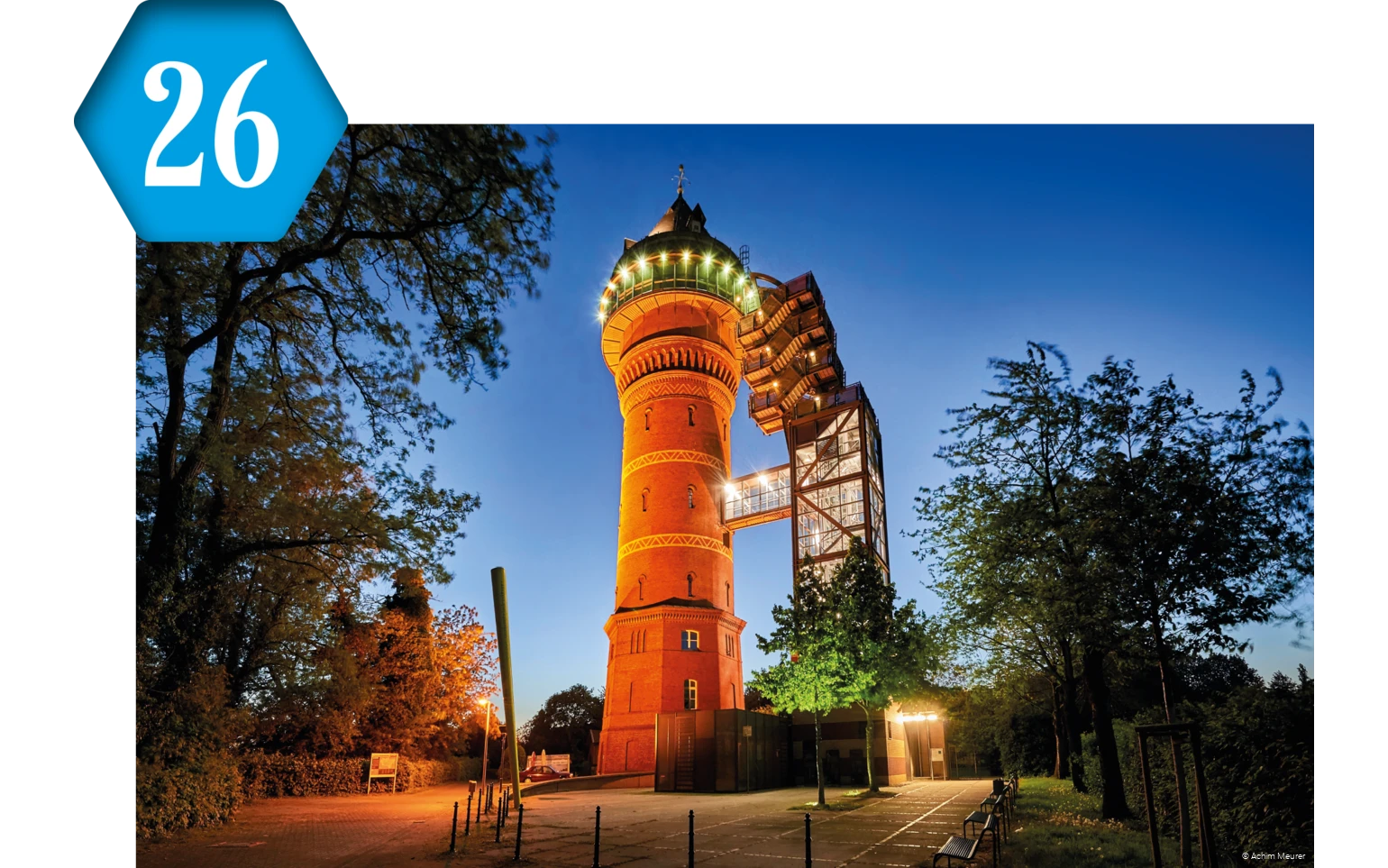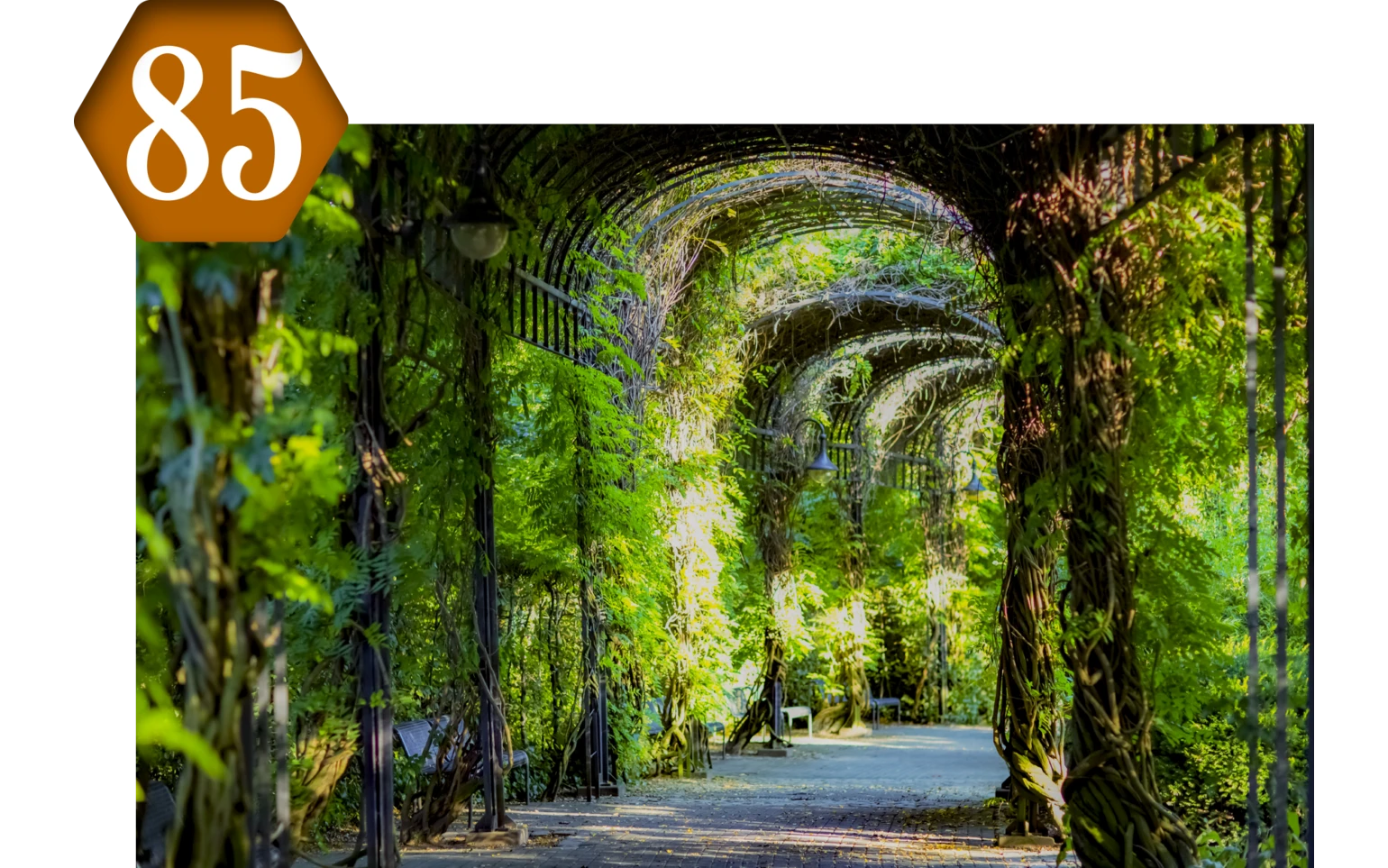Postcard with water tower (left), used 1907
Aquarius Wassermuseum
The virtual journey along the Ruhr begins at a height of 35 meters with a comprehensive Ruhr Valley panorama. At more than 30 multimedia stations, spread over 14 levels of the historic Styrum water tower, visitors then delve deep into the history of the Ruhr's water supply and learn that this conurbation would still be inconceivable today without the Sauerland water reservoir ...
- Infotext read more
-
… Because the Ruhr, the lifeline of the whole district, originates in the Sauerland. Collieries, ironworks, industrial plants, cities with millions of people – they all need water for drinking, cooling, steam engines, coal washing and much more. Visitors are always at the heart of it, building a ship's hoist, controlling the operation of a waterworks or determining their personal "water footprint".
Of course, they also learn how a water tower works – after all, the Aquarius is one itself. At the top is a suspended tank with a capacity of 500,000 litres, once with several flats below it in the shaft of the tower. Below that, in the brick tower shaft, were several flats. "The outer wall was curved, in the middle the huge water pipe," one of the former residents recalls her life under the huge water reservoir. "Kitchen, living room, bedroom - the rooms were all the same size. The couch was where the curved part was, the furniture occupied the partitions."
August Thyssen had the almost 50-metre-high Styrum water tower built in 1892/93 to supply his iron and rolling mills with water. He also built the associated waterworks, where steam pumps continuously filled the water tank in the tower, thus ensuring a constant water pressure. Other large coal and steel companies also maintained their own waterworks along the Ruhr because the water supply of the towns and communities was far from being able to meet the needs of industry. The water tower in Styrum soon fed not only the nearby rolling mills but also the Thyssen Graf Moltke colliery in Gladbeck and the Gewerkschaft Deutscher Kaiser mining company near Hamborn. Approval for the kilometre-long water pipes was only granted by the municipalities concerned as long as the neighbouring houses and settlements were connected to the grid. When Thyssen sold the Styrum waterworks including the water tower in 1912, these facilities and other waterworks in Mülheim laid the foundation for the RWW Rheinisch-Westfälische
Wasserwerksgesellschaft. In 1992, the tower became the home of the Aquarius Water Museum.
Steel Time Travel Destinations Nearby
The "Steel Time Travelers" Luise & Alfred: Aquarius Wassermuseum
Al:
Colleague Thyssen has built a lovely brick Rapunzel Tower here, though! ...
- Full dialog text
-
Al: But colleague Thyssen has built a charming brick Rapunzel tower here!
Lu: Colleague? That is truly a fairy tale. Competitor is more like it! Before you two make common cause, people will fly to the moon, tsss. But Mr. Thyssen has good taste - I like that!
Al: Granted - it looks like the defense tower of a knight's castle! But the interior dilutes this impression. Gravity is what one knows how to use here. As in the Sauerland, water only flows downhill.
Lu: That makes sense - an artificial mountain! Pump water up it and there's pressure all around.
Al: Exactly. The rolling mill craves cool refreshment. Ingenious architecture combined with technical sophistication - could have been mine!
Lu: Could have, would have. You're more of a jealous bull than a cool Aquarius!
Visitor information
Address:
Burgstraße 70
45476 Mülheim an der Ruhr
Phone: 0208/4433390
aquarius@rww.de
www.aquarius-wassermuseum.de
Opening hours:
Tue-Sun: 10 a.m. - 6 p.m.
20 December - 1 January (New Year) closed
![]()
![]()
![]()
![]()
